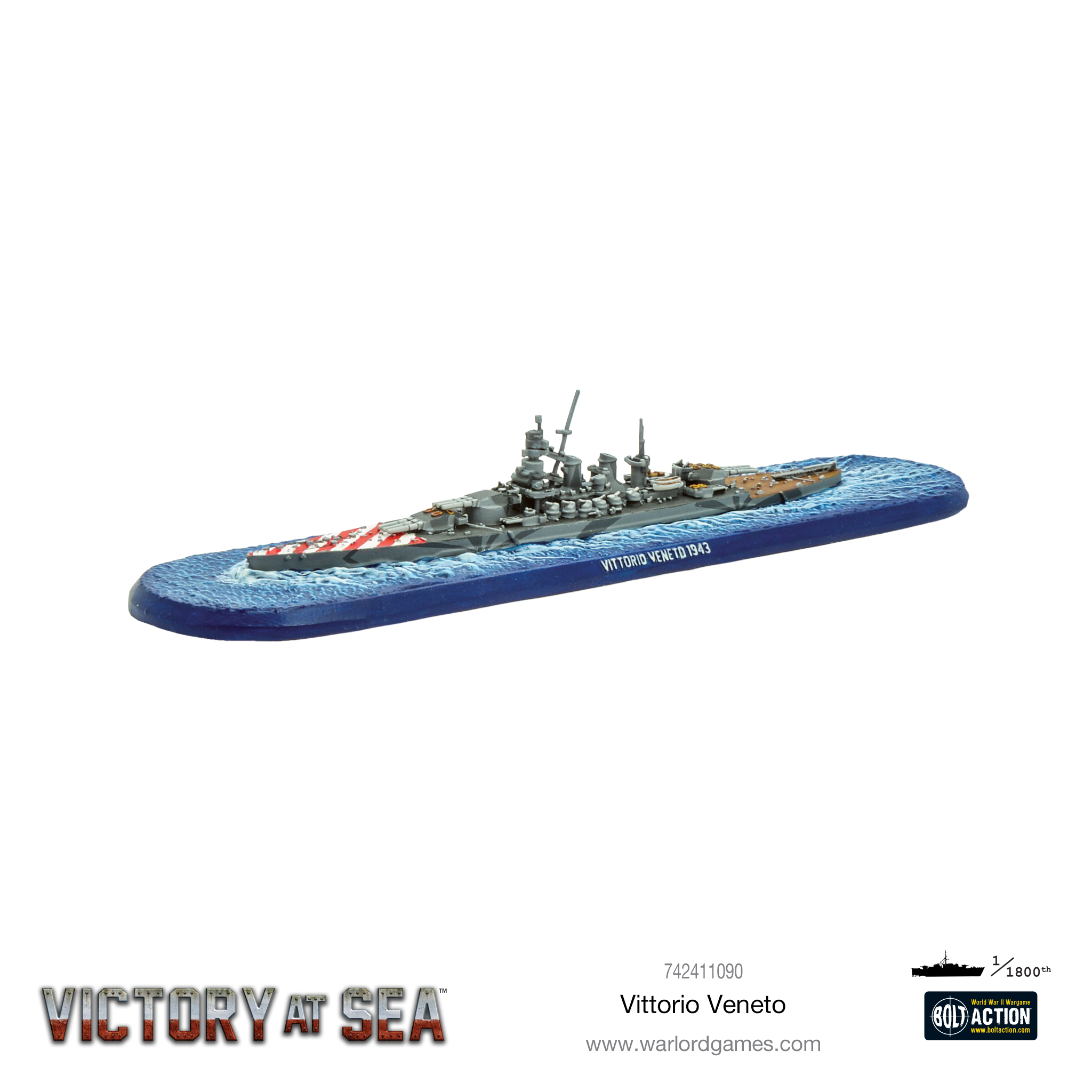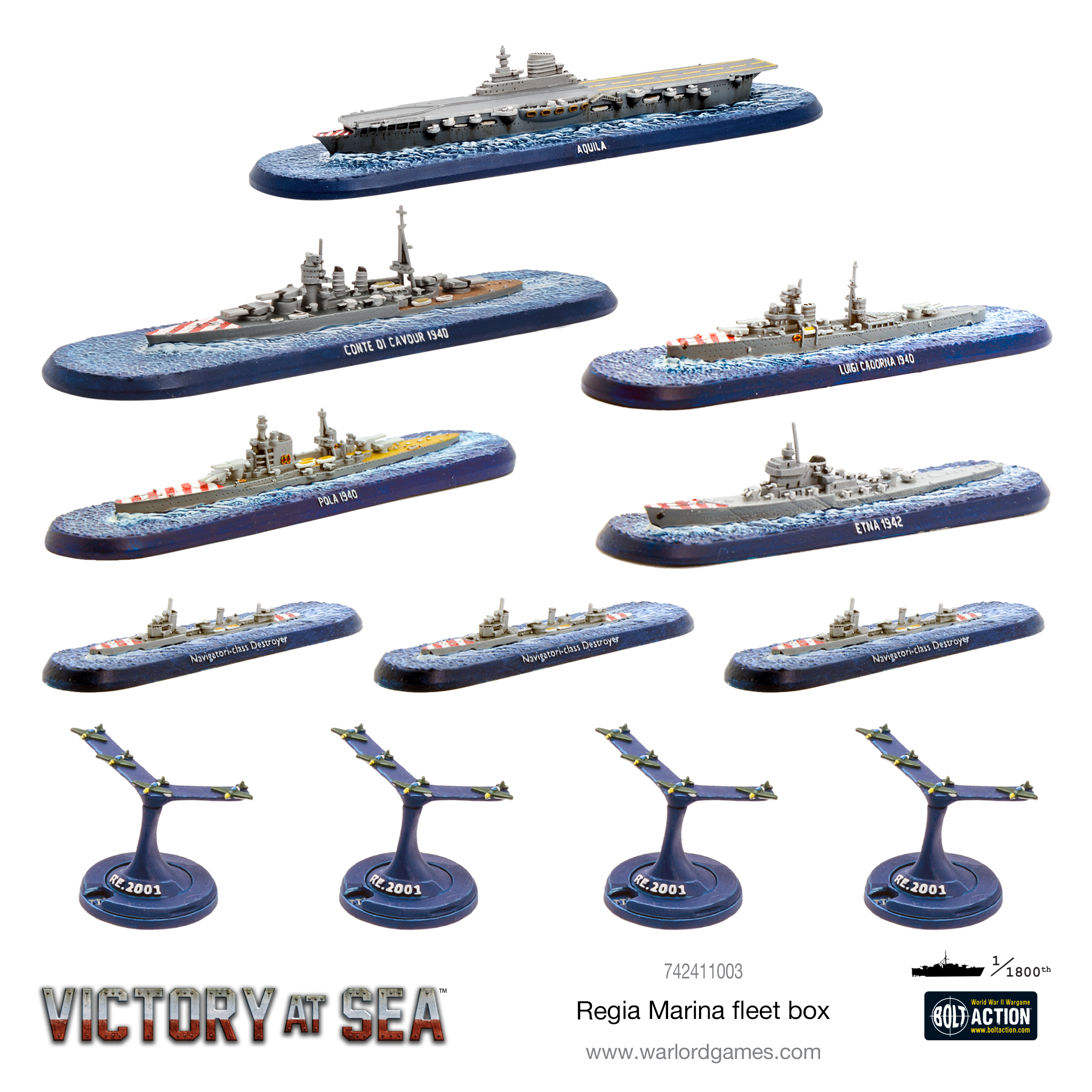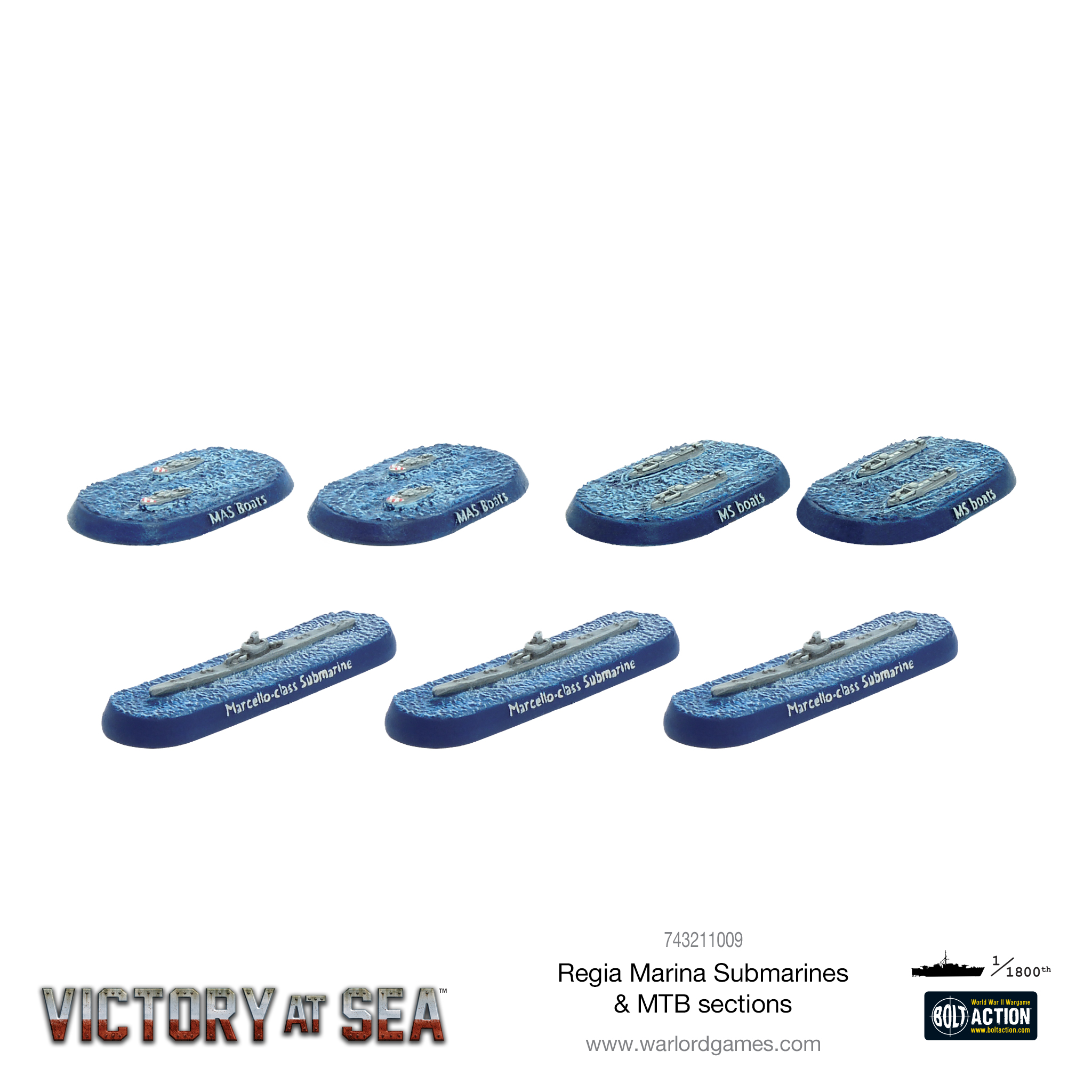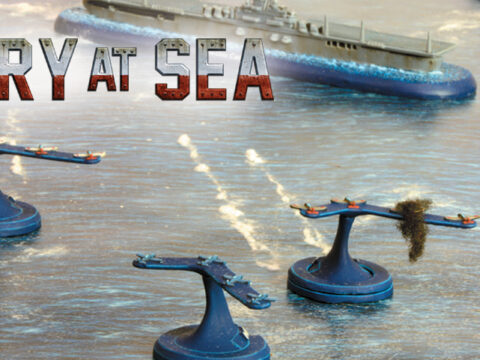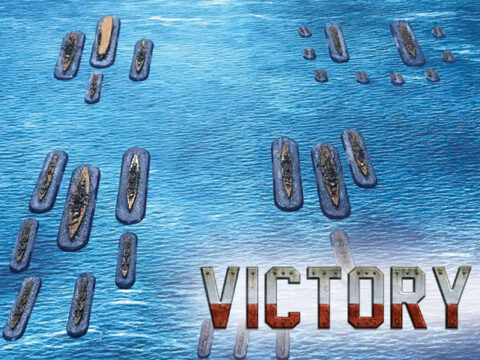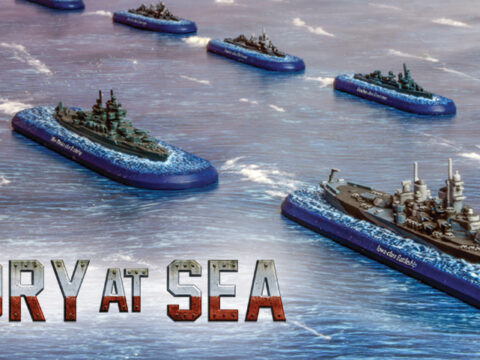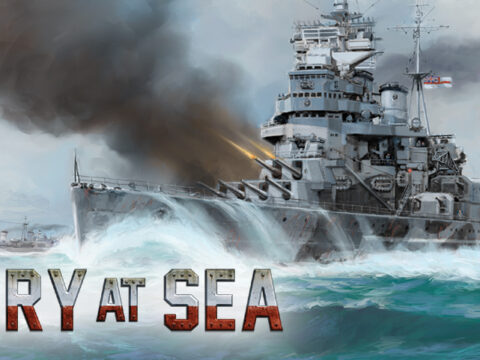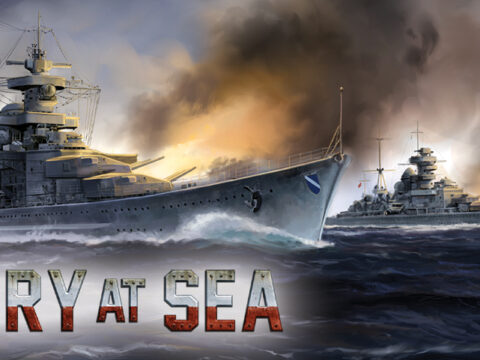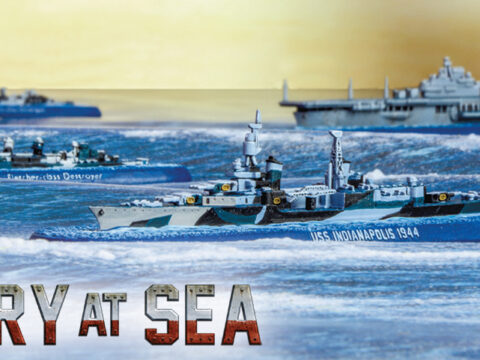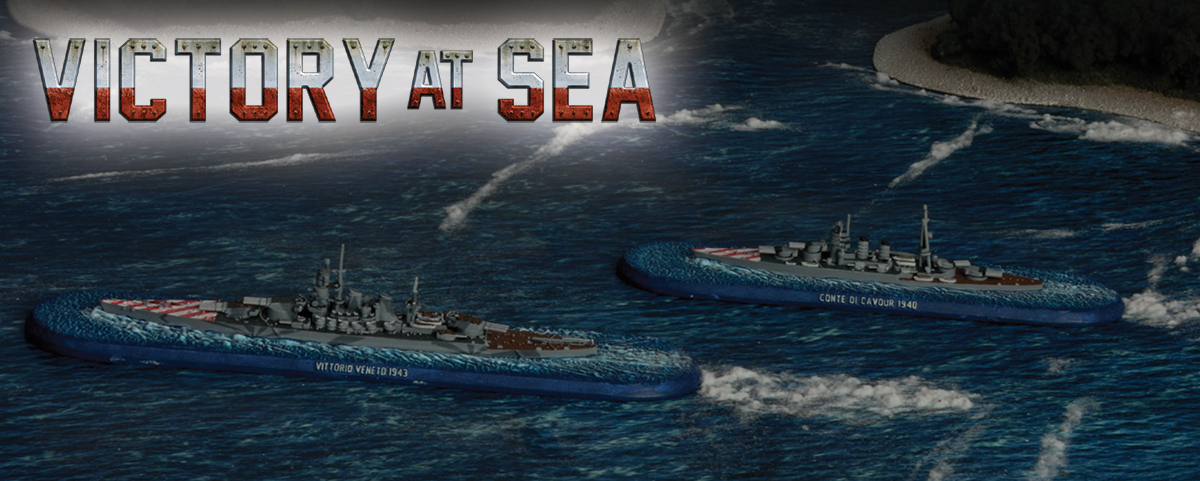
In this article, we’ll take a look at the vessels that comprise the Victory at Sea Regia Marina fleet box, as well as the Littorio Class Battleship, Vitorrio Veneto.
Littorio-class Battleship – Vittorio Veneto
The Littorio class was the first new Italian battleship class for nearly a decade when design work began in 1930. Initially designed to remain within the 35,000-ton Washington Treaty limit, the final displacement was just over 40,000 tons. As well as being good-looking ships, the Littorio-class included a number of new features including high-velocity guns. They were probably the first of the ‘fast battleships’ that would come to dominate capital ship design in the late 1930s and onward.
Vittorio Veneto saw extensive service in World War Two, participating in the Battles of Cape Spartivento in November 1940 and Cape Matapan in March 1941. Though struck by a torpedo at this latter engagement and again later courtesy of a British submarine, she would escape unscathed from the British raid on Taranto of November 1940. 1941 and early 1942 was spent attempting to attack British convoys en route to Malta, until fuel shortages forced the end of such activity. In the armistice of 1943, she was surrendered to the Allies after Italy withdrew from the war, spending the next three years under British control in Egypt. Thereafter she was allocated to Britain as a war prize and was scrapped.
Aquila-class Carrier – Aquila
The role of aircraft carriers was undervalued by the Regia Marina, as the navy was expected to operate in the Mediterranean, close to Italian air bases. This attitude was best expressed by Mussolini who said, “Italy itself is an aircraft carrier laid over the Mediterranean.” Accordingly, the fleet air coverage was the responsibility of the Regia Aeronautica. The Regia Marina would request, on a case-by-case basis, air coverage to Regia Aeronautica, which would fulfil these requests if aircraft were available. Unsurprisingly, this arrangement often left the fleet without air cover, or with the aircraft arriving too late, or, worse, the aircraft mistakenly attacking Italian ships (as during the battle of Calabria). When the necessity for an air component travelling with the fleet was clear, it was decided to convert the ocean liner Roma into an aircraft carrier.
As there was already a battleship under construction named Roma, the new carrier was renamed Aquila. She was nearly complete at the time of the armistice in September 1943, after which she was seized by Germany. Before anything could be done with her, the Aquila was damaged by a series of Allied air attacks and soon after she was partially scuttled by Italian frogmen.
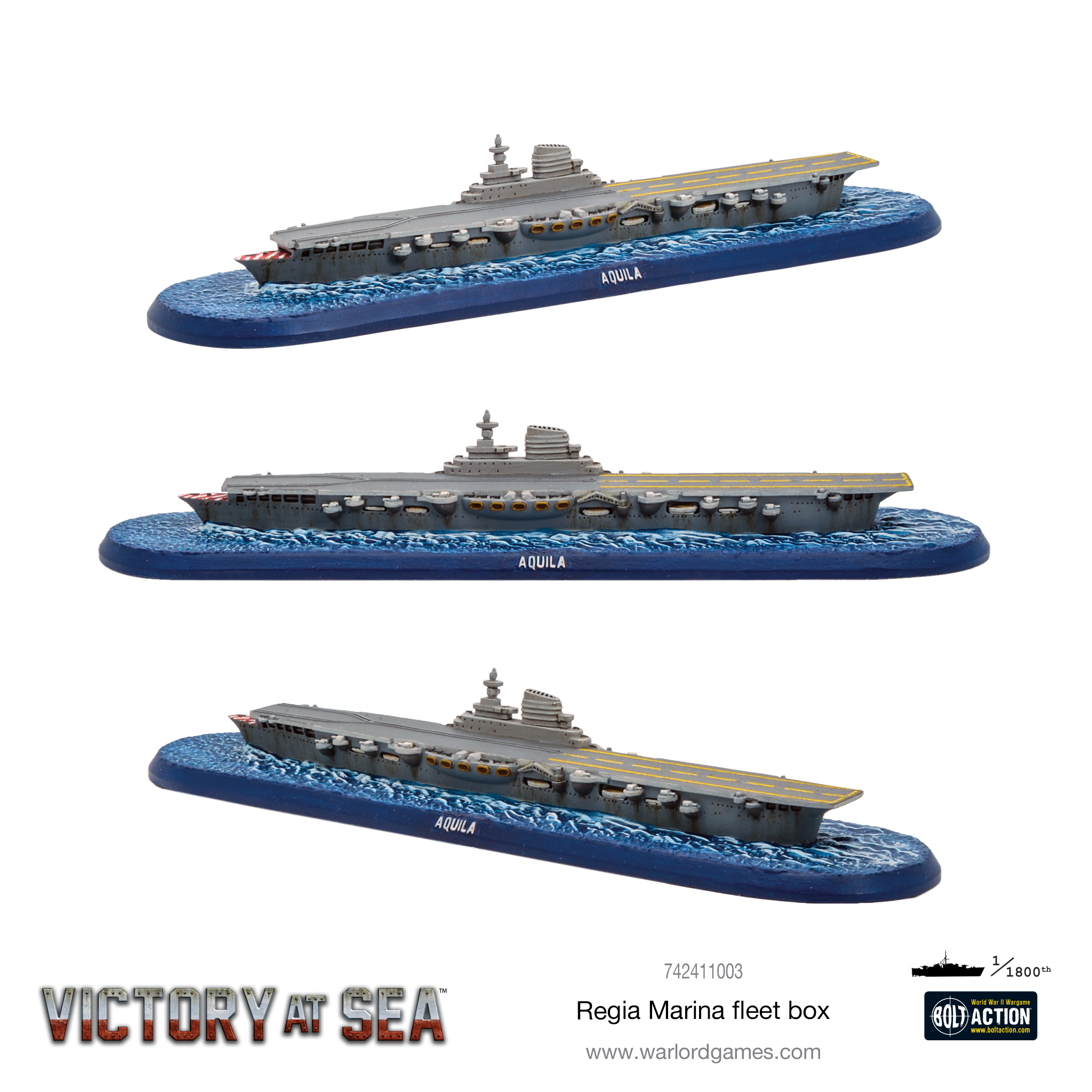
Conte di Cavour-class Battleship – Conte di Cavour 1940
Originally commissioned in 1915, Conte di Cavour (and sister ship Giulio Cesare) were rebuilt as first-generation fast battleships in a process that left only 40% of the original structure in place. The central tower was removed, as was one main battery turret. The remaining guns were upgraded from 12-inch to 12.6-inch. The new boilers and turbines improved speed from 21.5 knots to 28 knots. Overall, they were good units, even with weak anti-aircraft and submarine protections.
Both ships participated in the Battle of Calabria in July 1940. Conte di Cavour was badly damaged when British torpedo bombers attacked the fleet at Taranto in November 1940. Her crew deliberately ran her aground, though most of her hull remained underwater. Her salvage and repair was a low priority and repairs were not completed prior to the Italian armistice in September 1943. Though the ship was then captured by the Germans, they did not continue repairs and the ship was damaged and capsized in an Allied air raid in 1945.
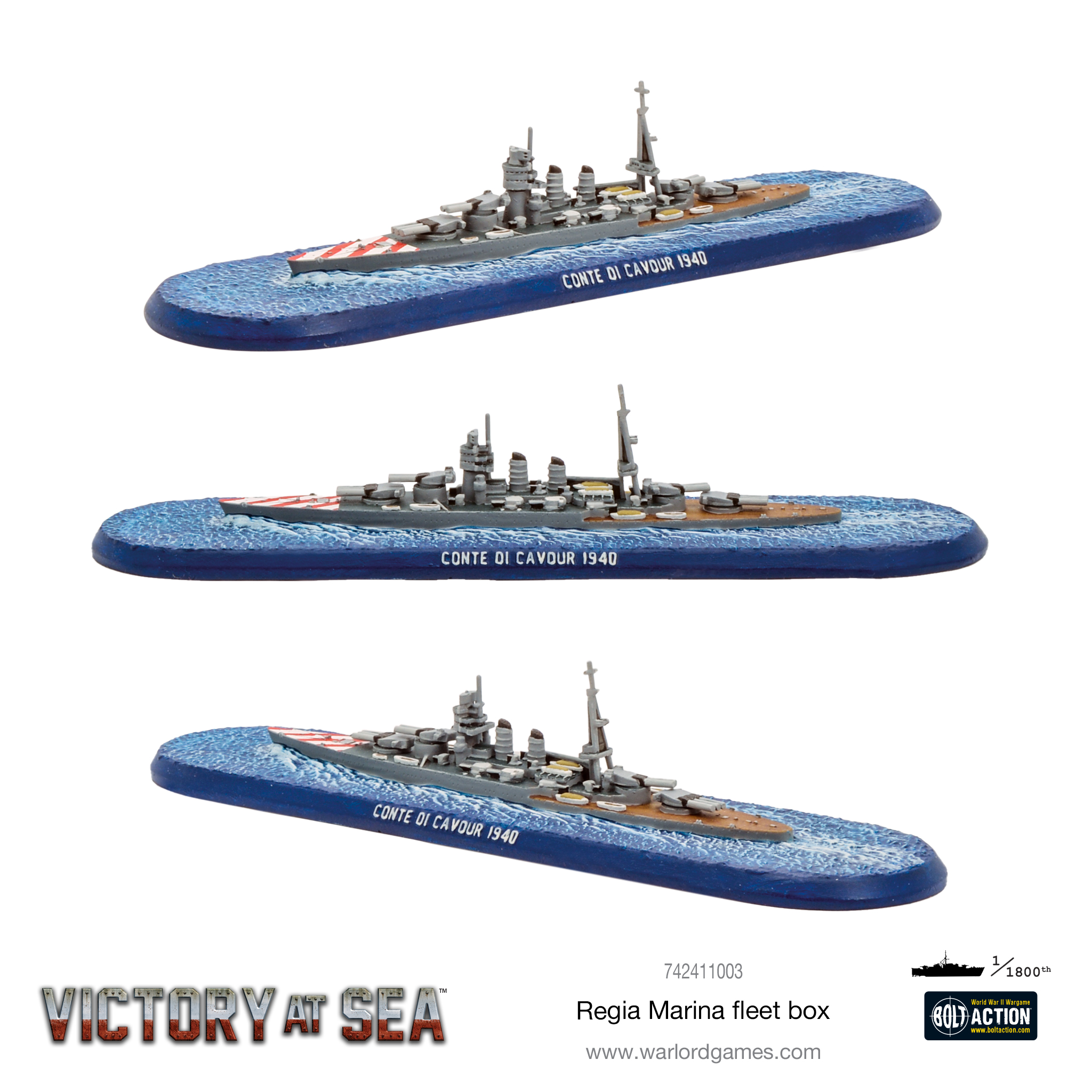
Etna-class cruiser – Etna 1942
In 1939, Siam (now Thailand) placed on order for a pair of general-purpose light cruisers which were to be built in Italian yards. These hulls were subsequently taken over by Italy in 1942, with plans to complete them as anti-aircraft cruisers which also could also serve as flagships. Designated the Etna-class, the two ships were to be equipped with six 152mm guns in three updated dual-purpose twin mounts. In addition, ten of the equally new 65mm heavy anti-aircraft guns currently being designed for the Capitani Romani-class of light cruisers would also be carried, backed by a large number of lighter anti-aircraft guns. Both ships were still under construction when they were captured by German troops after the surrender of Italy in 1943. To prevent their use by the Germans, the ship was sunk by the retreating Italians.
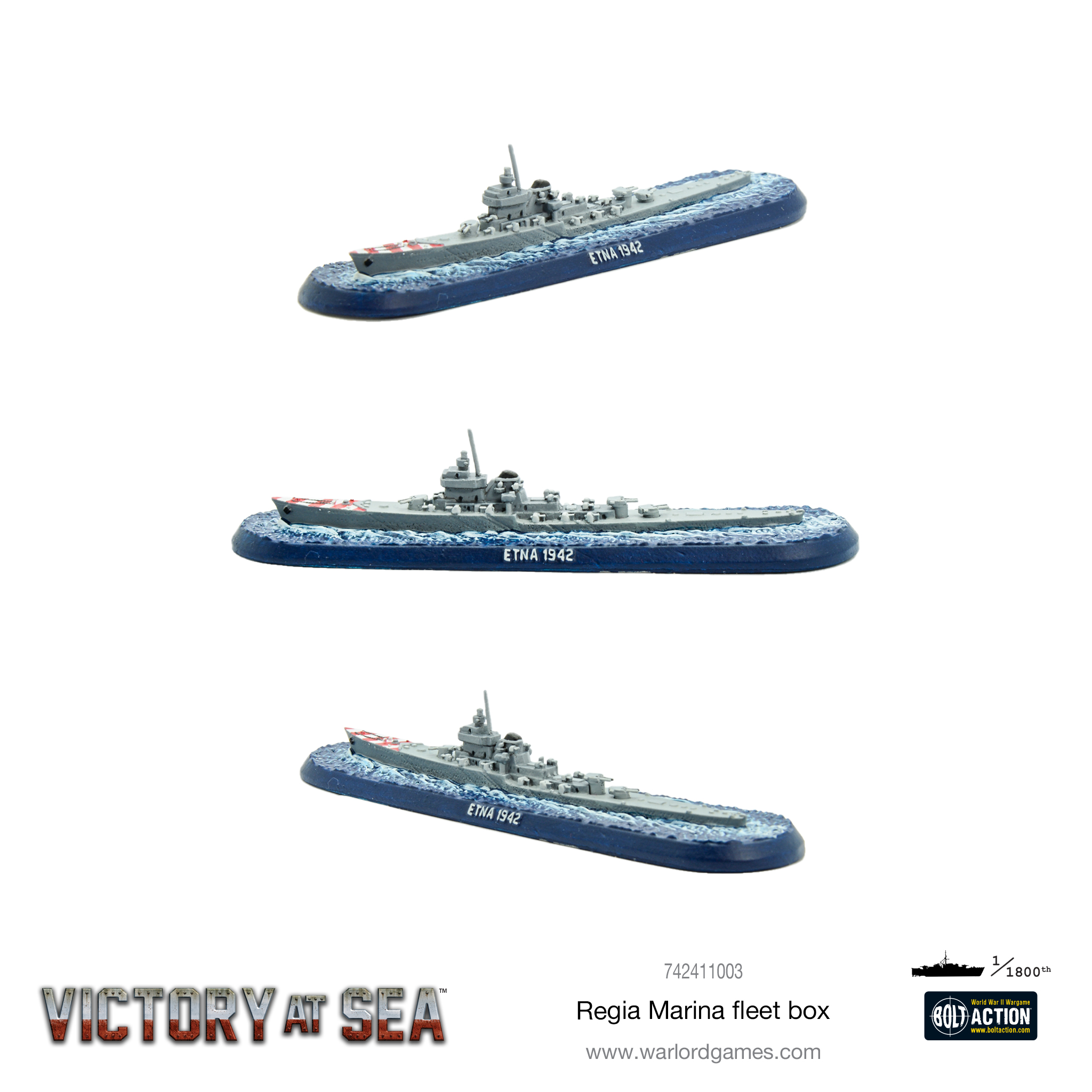
Zara-class cruiser – Pola 1940
The Zara-class heavy cruisers were designed to have improved protection over the Trento-class, at the cost of speed. Originally designated light, then armoured, the Zara-class was properly rated as heavy cruisers. They were intended to remain within the 10,000-ton limits of the Washington treaty but eventually crept up by more than 10% of that limit.
Pola was initially the flagship of the second squadron, leading it in 1940 in the battles of Calabria and Cape Spartivento. Thereafter she was reassigned to the third squadron, along with her three sister ships. In the Battle of Cape Matapan in late March 1941, she was disabled by British airstrike and shortly thereafter was sunk in a night engagement with the British Mediterranean Fleet alongside Zara, Flume and two Regia Marina destroyers
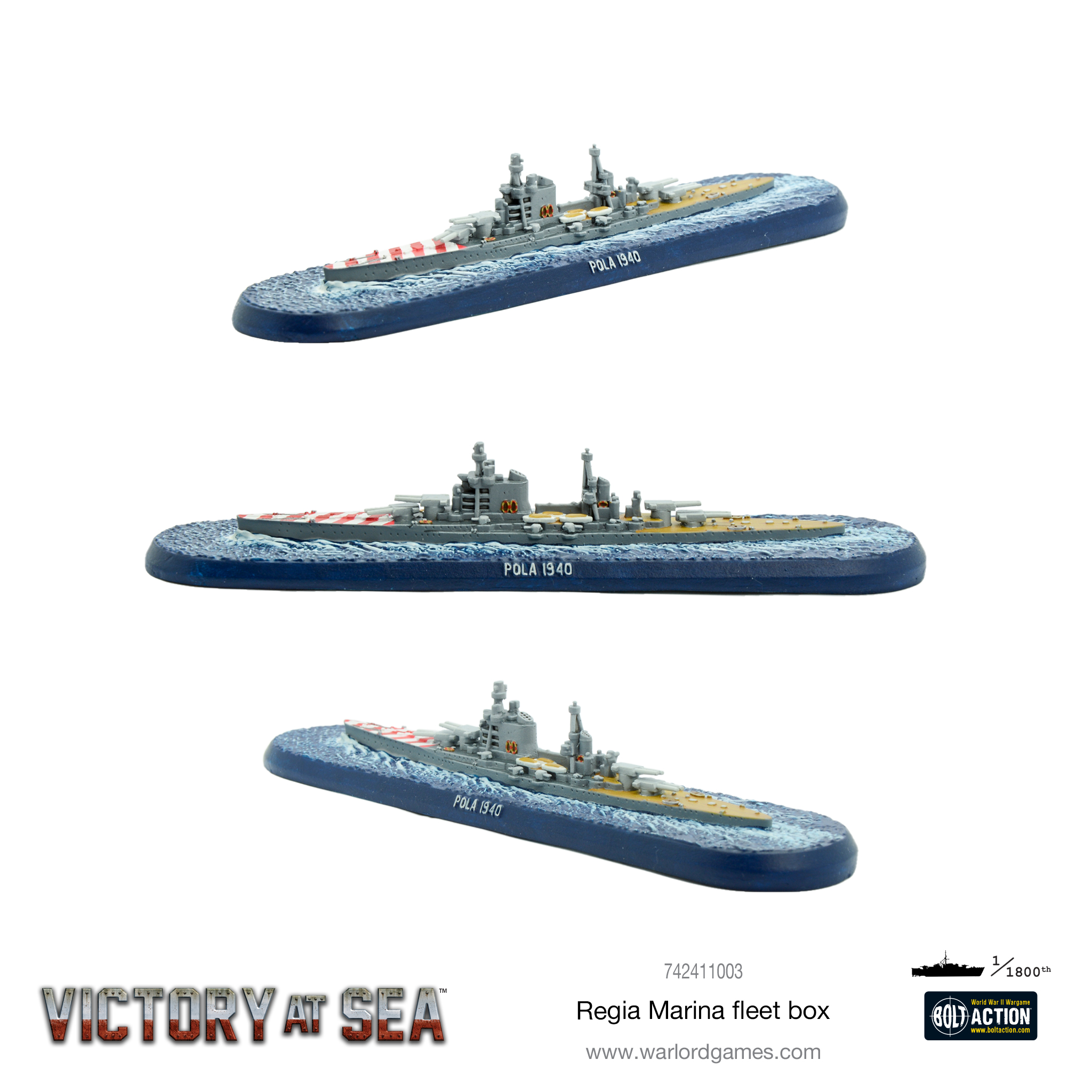
Luigi Cadorna-class cruiser – Luigi Cadorna 1940
A sub-class of the Condottieri-class and ordered by the Regia Marina as a follow on to the Giussano-class, the two ships of the Luigi Cadorna-class had similar characteristics but were intended to have improved protection and stability. However, protection ended up being virtually the same, but stability and hull strength were improved. Otherwise, these ships showed no improvement in fighting power over the earlier Giussano-class. A late war refit would see the removal of the catapult and two aircraft originally carried for additional light anti-aircraft weapons.
The lead ship of the class, Luigi Cadorna took part in the Battle of Calabria in July 1940, but was shortly thereafter placed into reserve owing to her relatively weak design. She re-entered service however when the need for the supply of the Axis armies present in North Africa became paramount. Over the next few months, she operated as a convoy escort, as a transport, sortied to intercept British convoys and performed minelaying operations outside Taranto. At the armistice, on 8th September 1943, she was still at Taranto but sailed to Malta the next day to surrender alongside the rest of the fleet. For the remainder of the war she operated as an Allied transport ship.
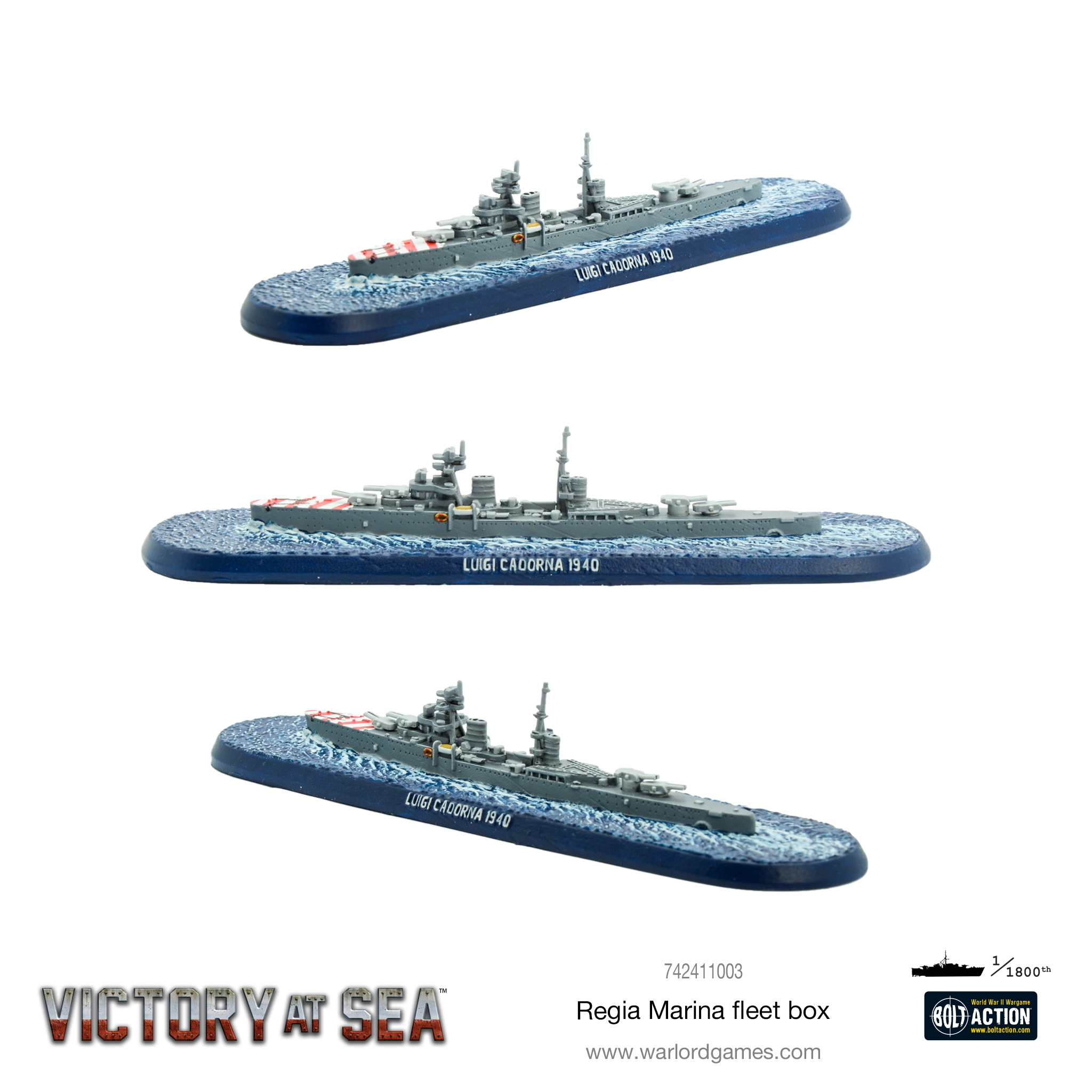
Regia Marina Fleet
In addition to the vessels above (with the exception of Vitorrio Veneto – available separately), the Regia Marina fleet box contains three Navigatori-class Destroyers and four Reggiane RE.2001 Falco II aircraft flights.
You can also get hold of the Regia Marina submarines and MTB sections box set, to further bolster your tactical options on the tabletop.

